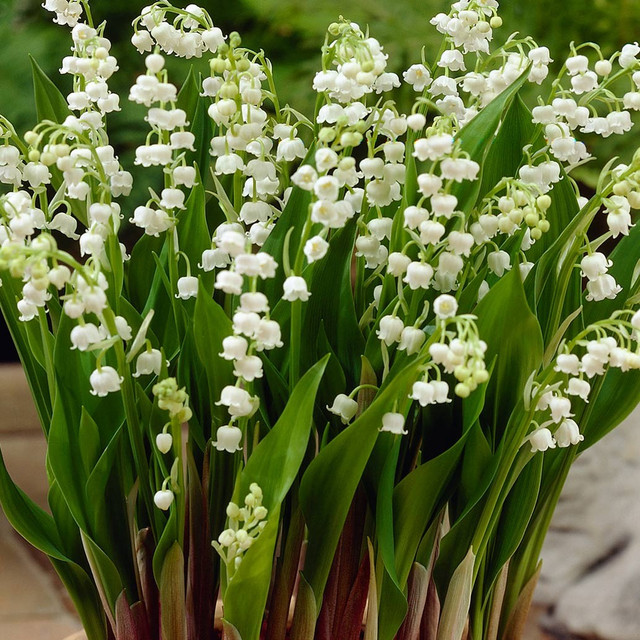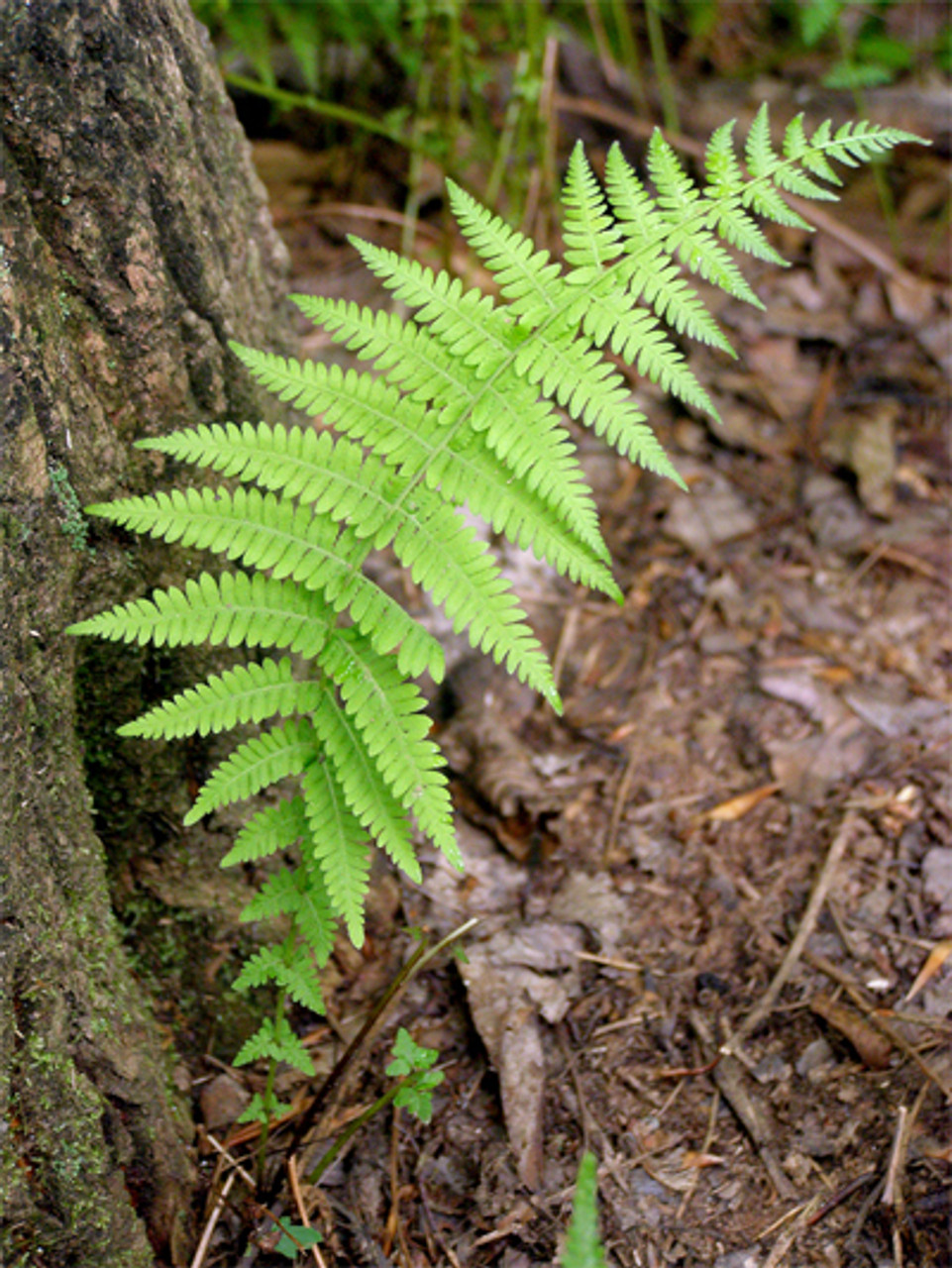17th Apr 2023
3 of the Best Shade Perennials
The Best Shade Perennials
Shade perennials that spread are a valuable addition to any garden. These plants not only provide attractive foliage and flowers, but they also help to suppress weeds and cover bare areas of the park. Whether you have a small shaded spot or a more extensive woodland garden, many shade-loving perennials spread and are easy to grow.
Hostas are one of the best selling shade perennials that spread. These plants have large, attractive leaves in shades of green, blue, and yellow. They produce spikes of flowers in the summer and are easy to grow in various soil types. Hostas can be used as a ground cover in large areas or as a specimen plant in a miniature garden.
Ajuga, also known as Bugleweed, is another shade-loving perennial that spreads quickly, and it has glossy leaves and spikes of blue or purple flowers in the spring. Ajuga is a low-maintenance plant that is also deer-resistant.
Lungwort is a hardy perennial with attractive foliage and clusters of pink or blue flowers in the spring. It spreads quickly and tolerates a range of soil conditions. Lungwort also appeals to bees and pollinators, making it a valuable addition to any garden.
Foamflower, or Tiarella, is a low-growing plant with attractive foliage and delicate white or pink spikes. It is easy to grow and spreads readily, making it an ideal ground cover for shaded garden areas.
Sweet Woodruff is a fragrant, low-growing plant with star-shaped white flowers in the spring. It spreads quickly and is often used as a ground cover in shady areas. Sweet Woodruff is also a valuable medicinal herb used to treat various ailments.
Japanese Spurge, also known as Pachysandra, is a hardy ground cover with shiny, evergreen leaves and small white flowers in the spring. It is easy to grow and spreads rapidly, making it an ideal choice for covering large garden areas.
Creeping Phlox is a low-growing plant with colorful flowers in the spring, and it spreads quickly and can cover slopes or rocky areas in the shade. Creeping Phlox is also a popular plant for attracting butterflies and other pollinators.
In conclusion, shade perennials that spread are an essential part of any garden design. These plants provide attractive foliage and flowers and help suppress weeds and cover bare areas of the garden. By including these plants into your landscape, you can create a beautiful and sustainable landscape that will provide enjoyment for years to come.
What are the best shade perennials that spread?
Lily of the valley, or Convallaria majalis, is a delicate and fragrant perennial plant that is native to Europe and Asia. It belongs to the Asparagaceae family and is often used in gardens and as a cut flower.
The plant grows from a rhizome and has glossy, dark green leaves that are about 15cm long. In the spring, the lily of the valley produces small, bell-shaped, white or pink flowers that are highly fragrant. Flowers are widley used in wedding bouquets and are a traditional May Day symbol in many European countries.
Lily of the valley prefers to grow in shaded areas with well-drained soil. It is a tough plant that can survive cold temperatures and is often used as a ground cover or to border a garden. It is also a popular plant for naturalizing in woodland settings.
The plant has a long history of medicinal use, dating back to ancient times. The leaves and flowers contain cardiac glycosides, which can be toxic in large amounts but are used in small doses to treat heart conditions. The plant has also been used to treat epilepsy, headaches, and other ailments.
Lily of the Valley is a low-maintenance plant that is easy to grow and requires little care. It should be watered regularly during dry periods and fertilized yearly in the spring. The plant can be by dividing the rhizomes in the fall. Lily of the Valley is a stunning and fragrant perennial plant that is highly valued in gardens and as a cut flower. It is a hardy plant that is easy to grow and requires little maintenance. Its delicate appearance and sweet fragrance make it a popular choice for many gardeners, and its long history of medicinal use adds to its appeal.

The New York Fern, or Thelypteris noveboracensis, is a native perennial fern species that is found in the northeastern region of North America. It is commonly found in woodlands, swamps, streams, and rivers.
The New York Ferntypically grows to be around 2-3 feet in height and has a spreading habit, forming clumps of fronds that can reach up to 3 feet in diameter. The fronds are dark green and leathery, with a glossy surface, and are divided into several pairs of leaflets. The leaflets have a serrated edge and a pointed tip.
New York Ferns prefer moist, acidic soils and are often found growing in shaded areas. They are hardy and can tolerate various temperatures, making them an ideal plant for gardens in cooler climates.
One of the benefits of New York Ferns is that they are low-maintenance and require very little care. They can be propagated through spores, collected in late summer or early fall and sown in a well-draining, sterile potting mix.
New York Ferns are an excellent choice for gardeners looking to add a touch of greenery to shady areas of their landscape. They are also popular for naturalizing in woodland settings or as an underplanting for larger trees and shrubs. They are also a valuable addition to native plant gardens, as they provide habitat and food for various wildlife species, including butterflies, moths, and other insects.
The New York Fern is a hardy and low-maintenance perennial fern species that is native to the northeastern region of North America. Its glossy, dark green fronds and spreading habit make it an attractive addition to any shaded garden or naturalized landscape. Its ability to tolerate a vast range of temperatures and soil conditions and its value as a habitat plant make it a valuable choice for gardeners looking to add greenery to their landscape while supporting local ecosystems.

Buy perennials for shade online at Perennial Nursery Co.
Virginia Bluebells, or Mertensia virginica, is a native spring-blooming perennial wildflower in the eastern United States. Gardeners belove them for their delicate, bell-shaped blossoms in shades of blue and pink.
Virginia Bluebells grow about 1-2 feet tall and have a spreading habit, forming clusters of upright stems with oval-shaped leaves. The leaves are typically light green and can be up to 6 inches long. The flowers appear in early spring and are typically blue or pink, although they can sometimes be white or purple. The flowers are about 1 inch long and hang in clusters at the top of the stem.
Virginia Bluebells prefer to grow in moist, well-drained soil in partial shade or full sun. They are hardy and can tolerate various soil types, including clay and sandy soils. They are often found growing in woodlands, streams, rivers, and meadows.
One of the benefits of Virginia Bluebells is that they are low-maintenance and require very little care. They can be propagated by dividing the rhizomes in the fall or by sowing seeds in the spring or fall. Once established, they will self-seed and spread naturally, forming large clumps.
Virginia Bluebells are an excellent choice for gardeners looking to add a touch of color to their landscape in the early spring. They are also popular for naturalizing in woodland settings or as an underplanting for larger trees and shrubs. They are also a valuable addition to native plant gardens, as they provide habitat and food for a variety of wildlife species, including butterflies, bees, and other pollinators. Virginia Bluebells are a beautiful and low-maintenance perennial wildflower native to the eastern United States. Their delicate, bell-shaped flowers and spreading habit make them an attractive addition to any garden or naturalized landscape. Their ability to handle a wide range of soil types and their value as a habitat plant makes them a practical choice for gardeners looking to support local ecosystems.

